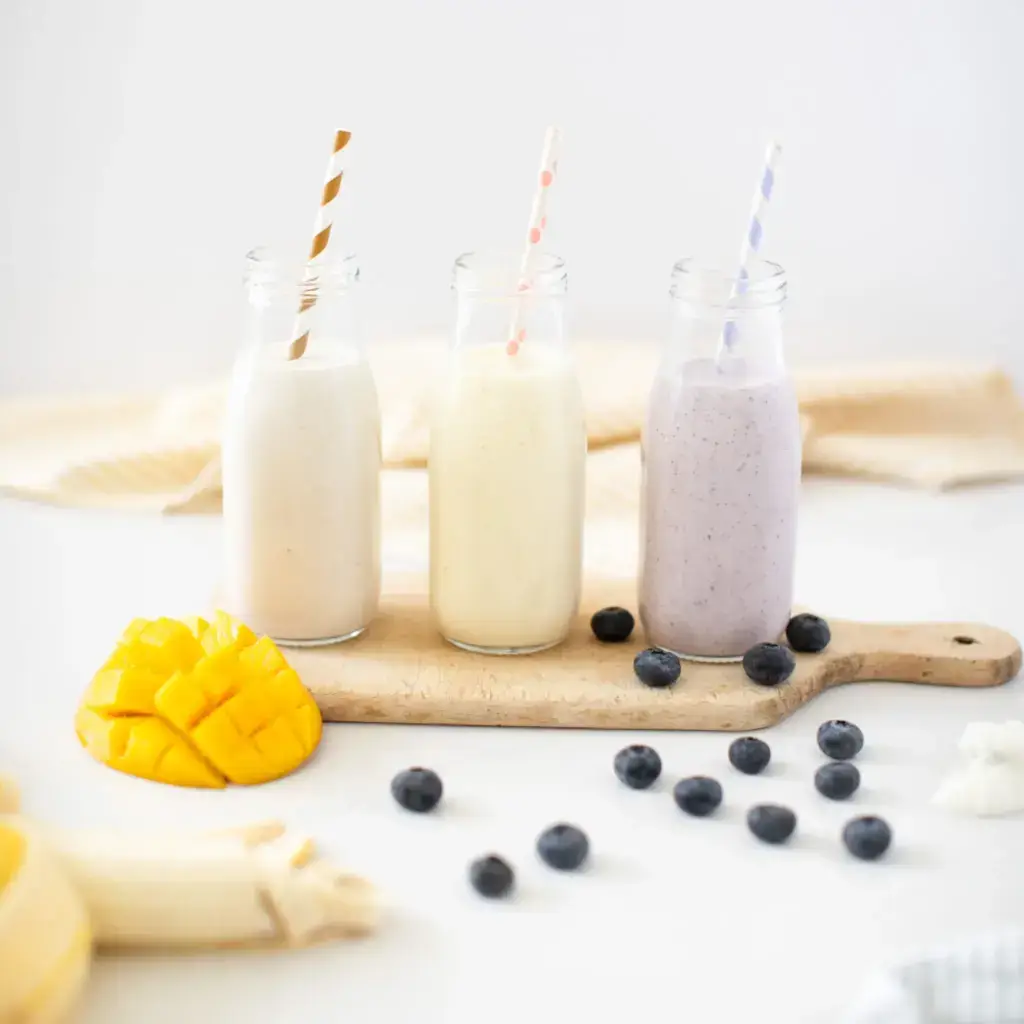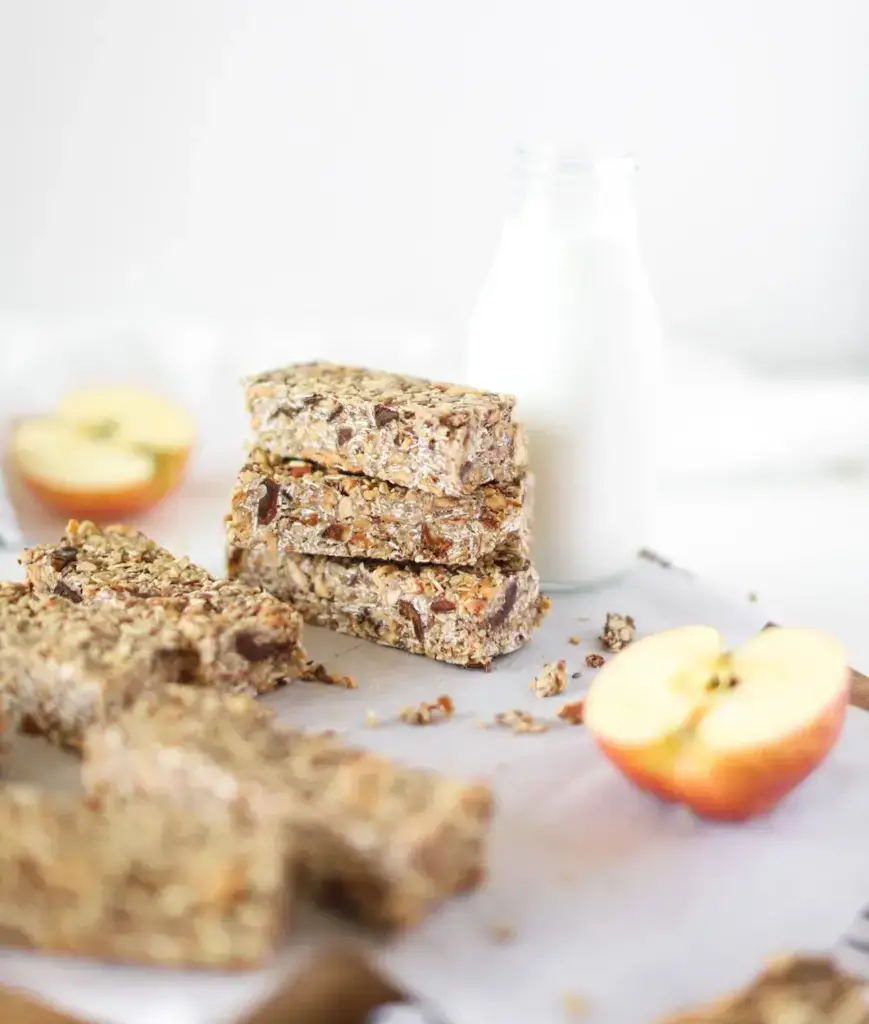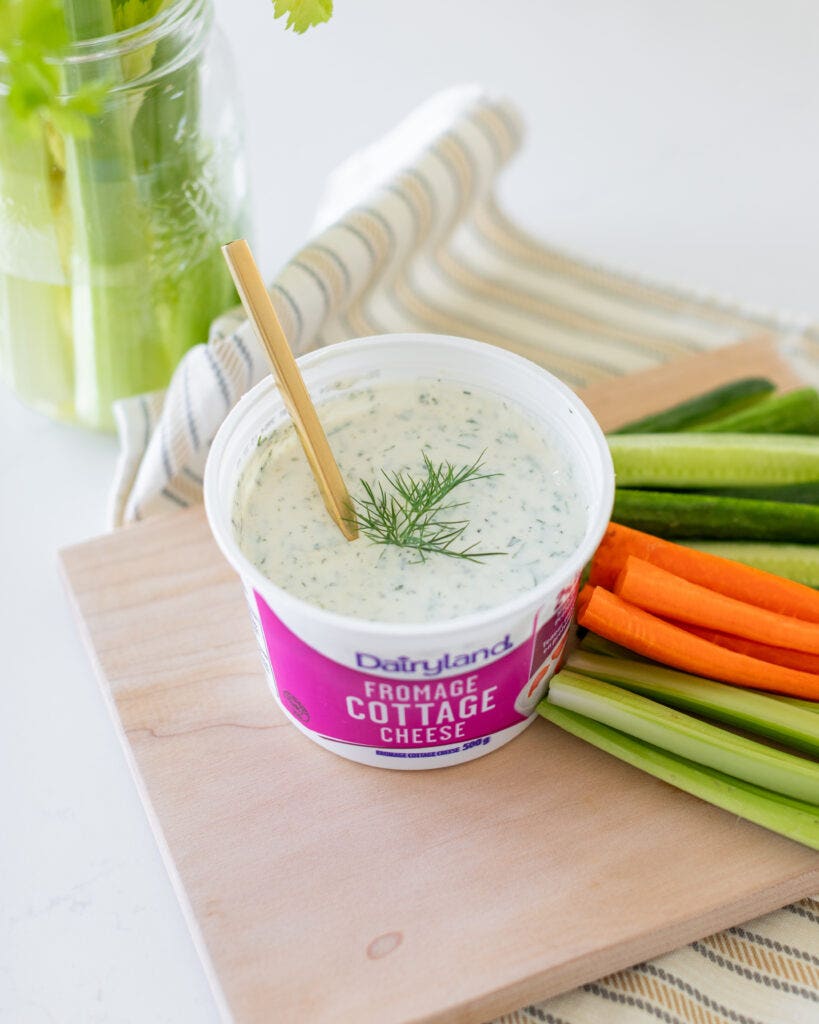It’s a pleasure to introduce you to my incredible colleague and friend, pediatric dietitian Sarah Remmer. Sarah is here to help dish out her trusted advice to answer one of your top questions: “How much protein does my child need?”. Take it away Sarah!
One of the most common questions that I get as a pediatric dietitian is “How much protein should my child be getting every day?”. Similarly, I often have parents come to me worried that their child isn’t getting enough protein. I want to reassure you right away that most kids ARE getting enough protein, even when it feels like they’re not. In this post, I’m going to walk you through everything you need to know about protein for kids, how much they should be consuming daily, and which foods to focus on. Let’s dive in!

What Is Protein, and Why Is It Important for My Child?
Protein is one of three essential “macronutrients” that humans need to get through our diets (the other two are carbohydrates and fat). Protein is made up of amino acids, which are like building blocks of our cells, tissues, and organs. These building blocks are really important for proper day-to-day functioning, but also for healthy growth and development for kids. Think of it as a fundamental component of muscles, bones, skin, and hair, especially during rapid growth periods like infancy and childhood. But protein plays some other key roles in the body as well, such as:
1. Their immune systems: Antibodies (which are proteins!) play a critical role in a child’s immune system. They help their body fight off infections and illnesses (which is especially important during cold and flu season!).
2. Their enzymes and hormones: Many enzymes and hormones in a child’s body are made up of proteins! Enzymes are important for facilitating chemical reactions that help with digestion, metabolism, and other important bodily processes. Hormones act as messengers, regulating various functions in the body too!
3. Energy source: While carbohydrates and fats are your child’s primary sources of energy, protein can also be used for energy when necessary. Even though the primary role of protein is not energy production, it’s sort of like a “backup source” just in case.
4. Tissue repair: As kids engage in daily movement, play and activity, their bodies experience quite a bit of wear and tear. Protein is necessary for repairing damaged tissues and maintaining their overall structure.
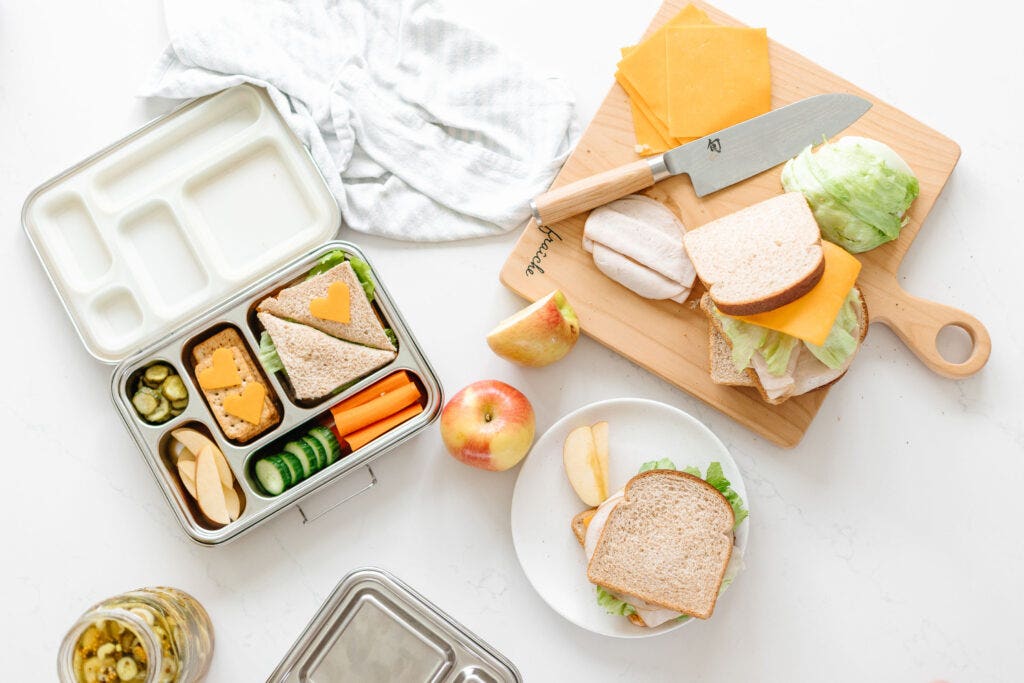
What Are Some Examples of Protein-Rich Foods?
Many foods that we eat and serve contain protein. Protein is found in animal-based foods like meat, poultry, fish, eggs, and dairy foods, as well as plant-based foods, such as beans, lentils, nuts, seeds, tofu, tempeh, and whole grains. You’ll also find protein in some processed, packaged foods such as protein bars and protein powder (both usually unnecessary for kids!) and plant-based meat alternatives (burgers, sausages). As long as you’re offering a variety of these protein-rich options throughout the day and week, your child will most likely meet their requirements (and yes, even if they don’t eat every bite, or are going through a picky eating phase!).
How Much Protein Does My Child Really Need?
It’s important that kids get enough protein every day to support their growth and development and for the other reasons listed above. Protein requirements vary based on many factors such as age, gender, physical activity level, and unique needs, but as a registered dietitian, I find that kids usually get what they need protein-wise as long as you’re serving a variety of foods throughout the day and week, at appropriate intervals. This goes for other nutrients too!
The last thing I’d want you to do is to obsess over the number of grams of protein your child is consuming because this will only lead to power struggles at the table and unnecessary stress for you and your child. Not what you want! Instead, my recommendation is to offer food (in the form of a meal or snack) every 2-3 hours throughout the day. This usually translates to breakfast, a morning snack, lunch, an afternoon snack, dinner and then sometimes a bedtime snack (depending on the timing).
As part of each meal and snack, I’d offer at least one protein-rich food. Easy, right? Don’t worry, I’ve got a list of ideas and recipes below.

But first, for those of you who prefer to have some more concrete guidelines, here are the recommended amounts of protein for children, by age:
- Children (1-3 years): Approximately 13 grams of protein per day
- Children (4-8 years): Approximately 19 grams of protein per day
- Boys (9-13 years): Approximately 34 grams of protein per day
- Boys (14-18 years): Approximately 52 grams of protein per day
- Girls (9-13 years): Approximately 34 grams of protein per day
- Girls (14-18 years): Approximately 46 grams of protein per day
To put this into perspective, for a 4-8-year-old, 19 grams of protein per day is roughly equivalent to 1 egg + ¼ cup of nuts or seeds + 1 cup of milk. Doesn’t seem like a lot, does it?? Remember that these recommendations are approximations. Some days your child might just consume less than this, and some days they may consume way more. This is normal and ok! Their intake will fluctuate day to day for many reasons and will likely average out over the period of a week if you serve foods in a positive and pressure-free way.
Here are a list of foods and the amount of protein in each (for reference):
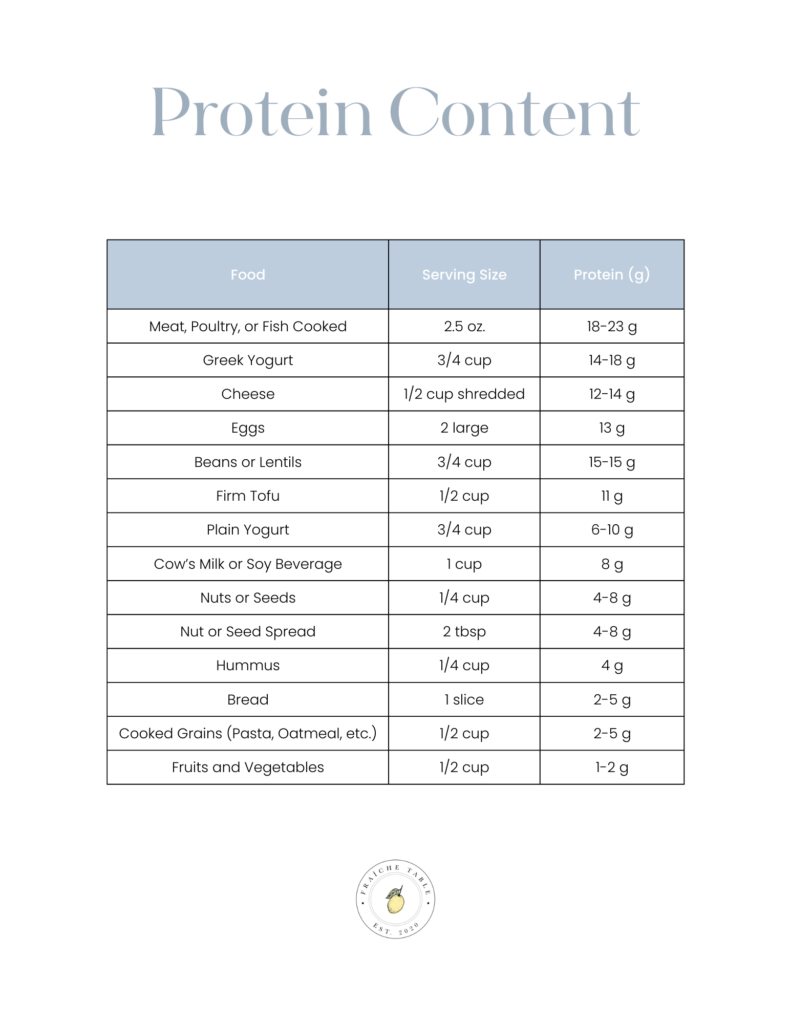
What Are Some Protein-Rich Meal and Snack Ideas?
As parents we’re always looking for easy meal and snack ideas for our kids, am I right?! I want to share some of my favourite easy meal and snack ideas from Fraiche Table’s delicious, nourishing (and simple to prepare) recipe collection. See below!
- Homemade Drinkable Yogurt
- Lunchbox Apple Oat Bars
- High Protein Ranch Dip
- Peanut Butter & Jam Muffins
- Chocolate Chunk Energy Bites
- Homemade Hummus with veggies & pita
